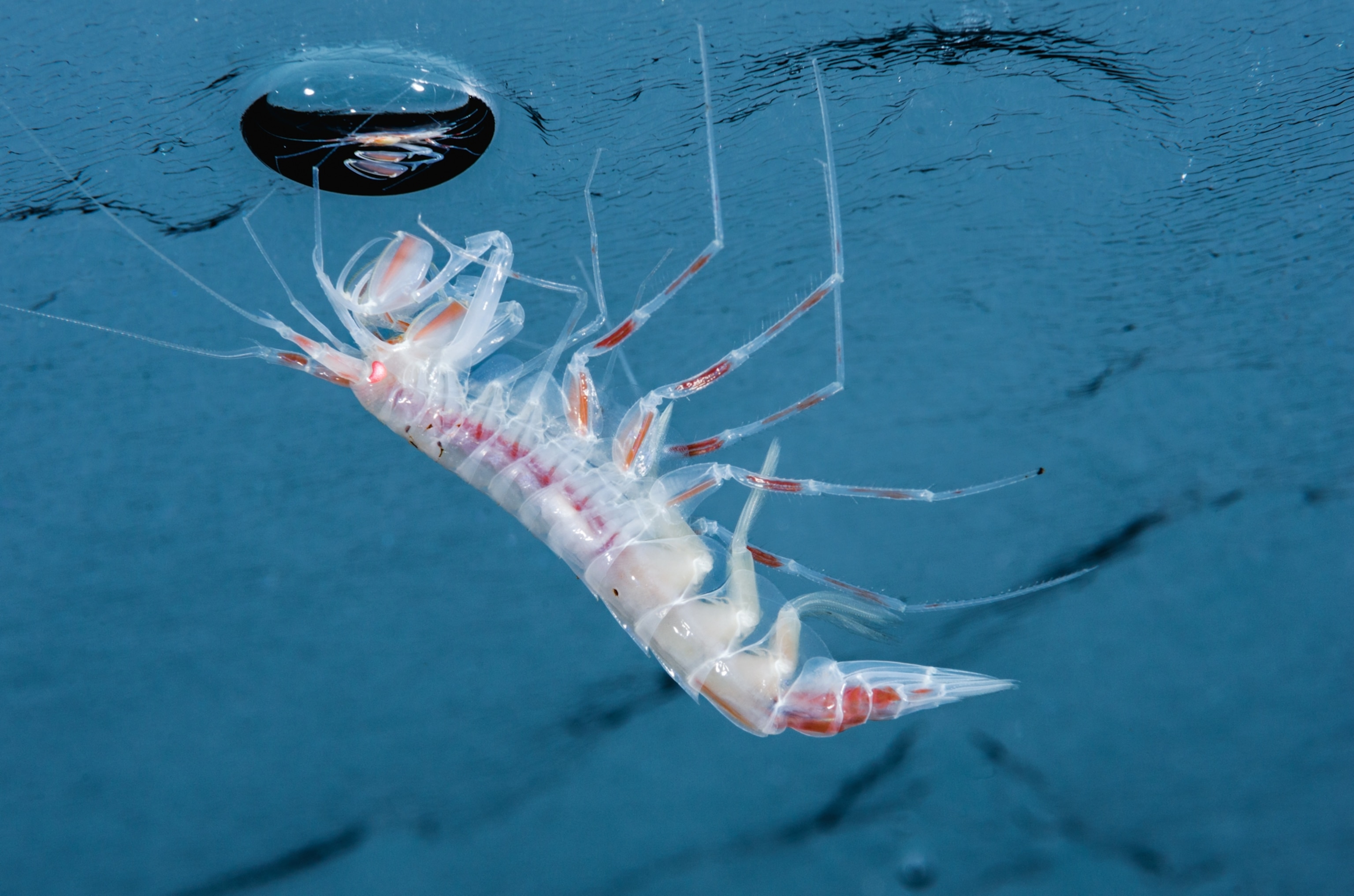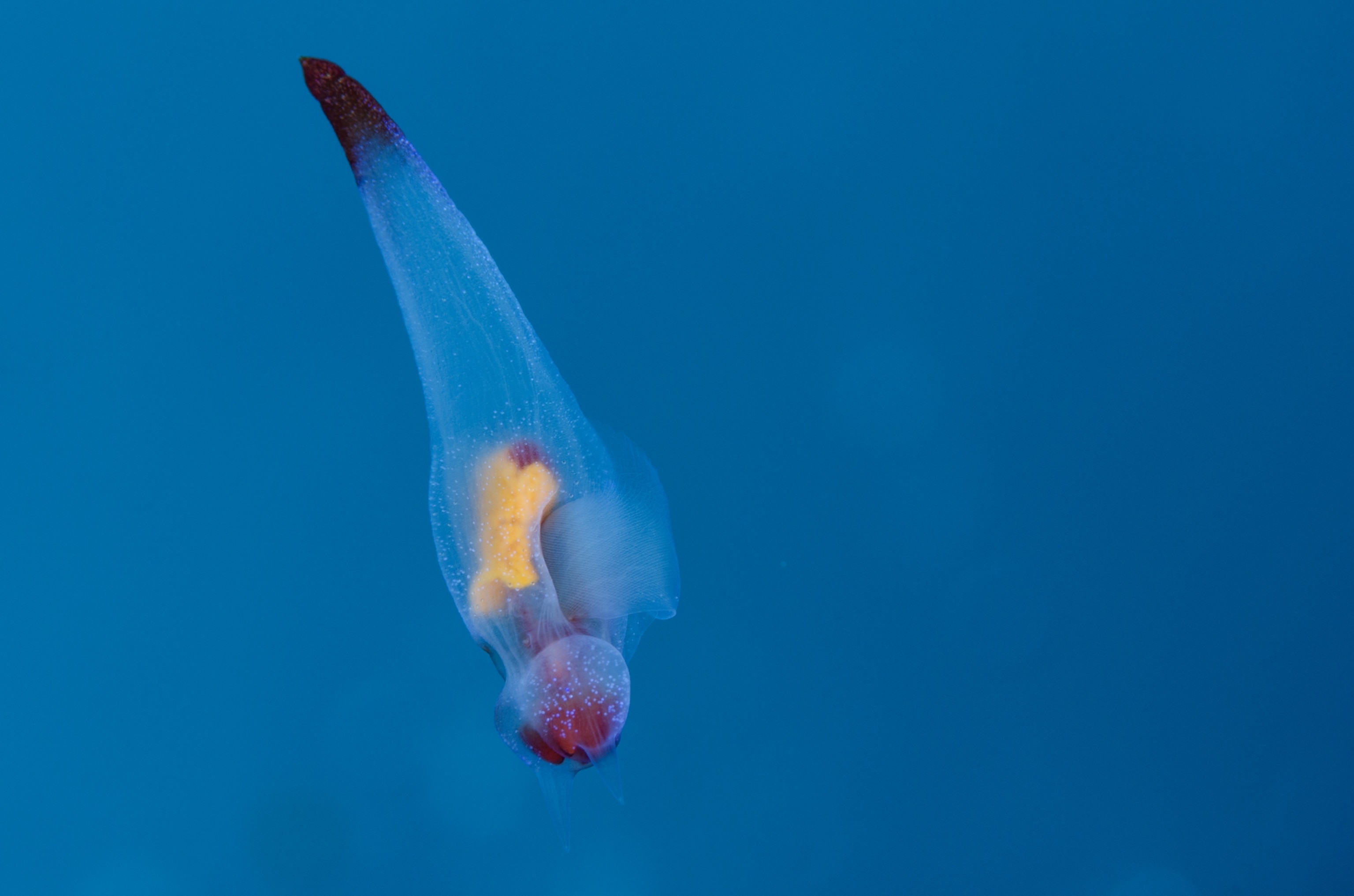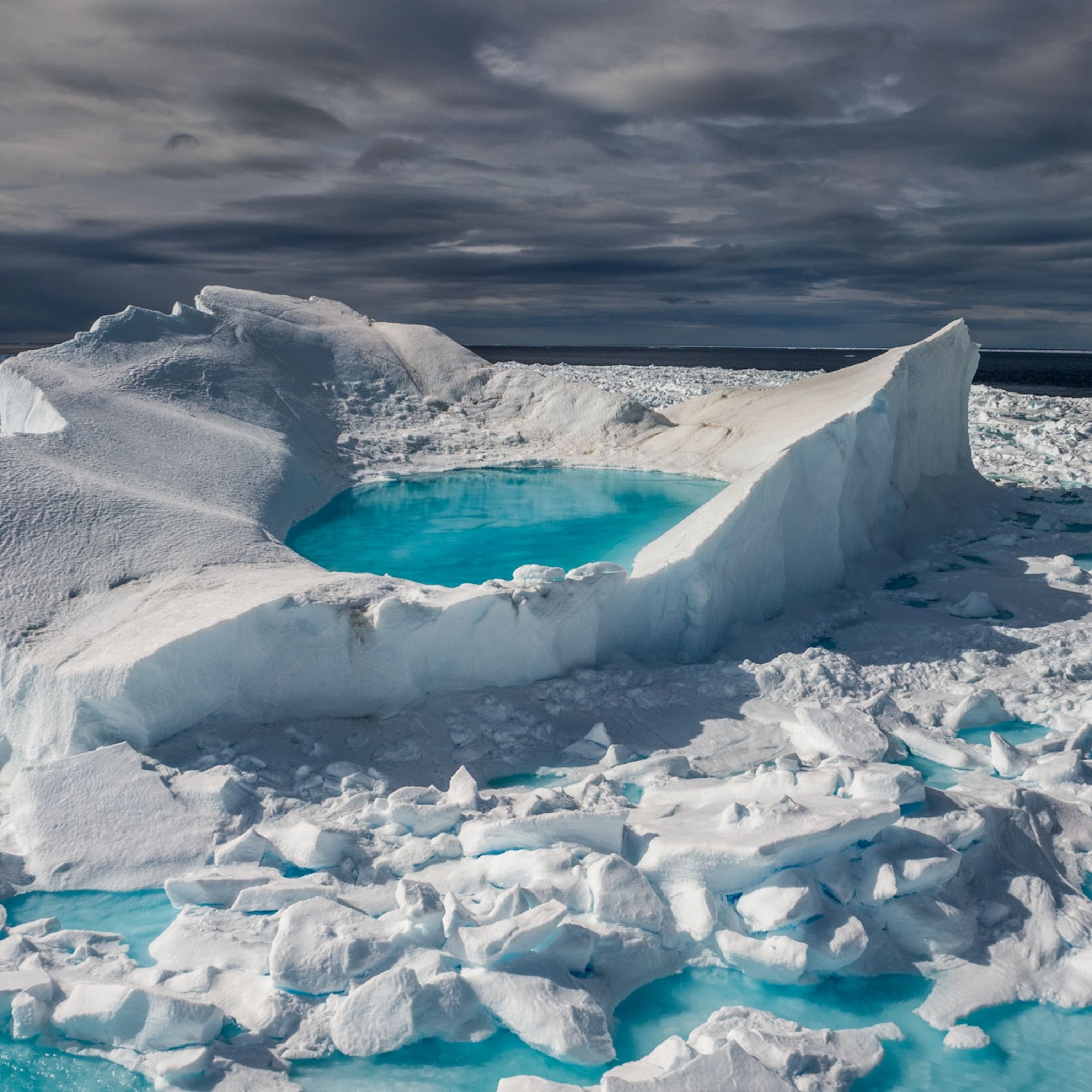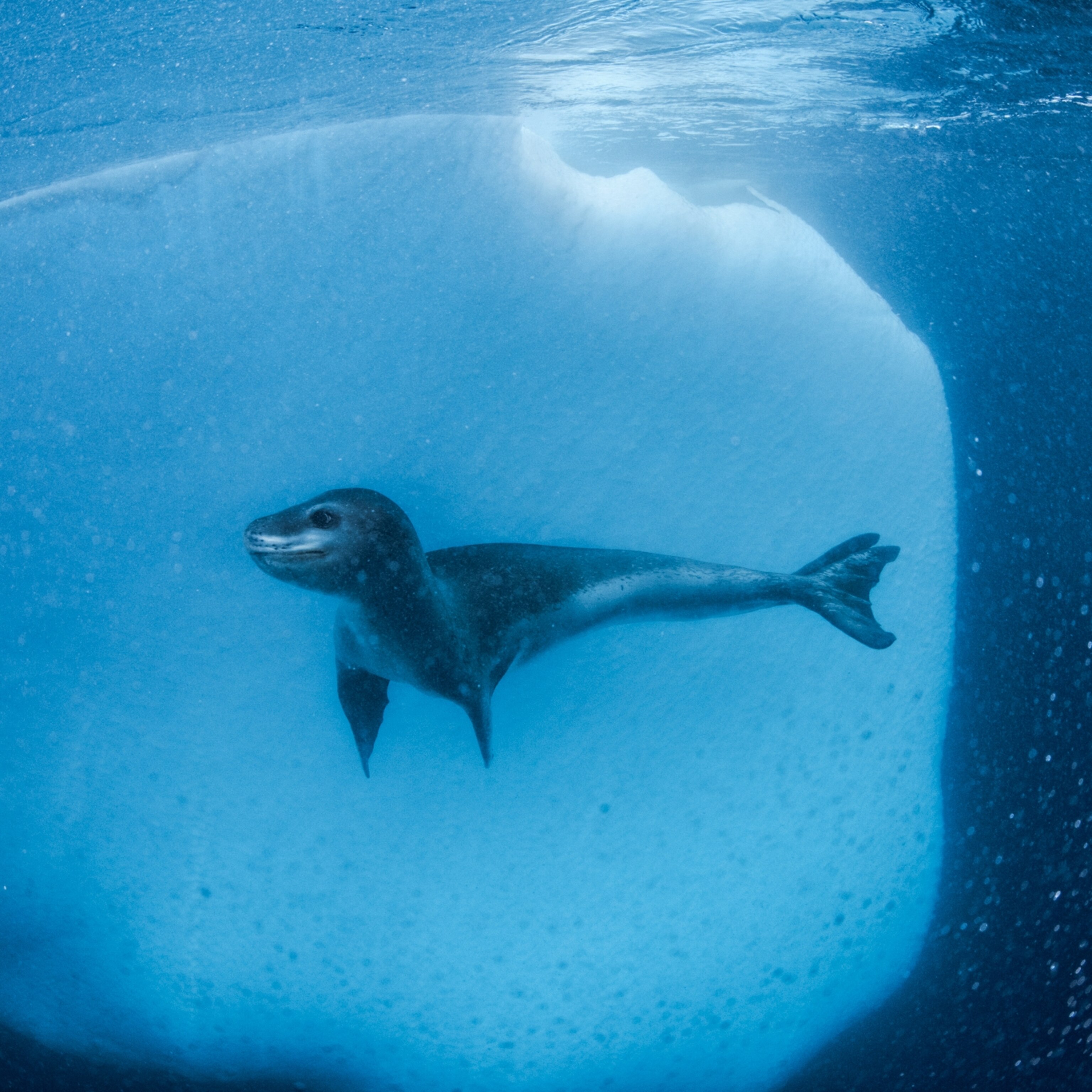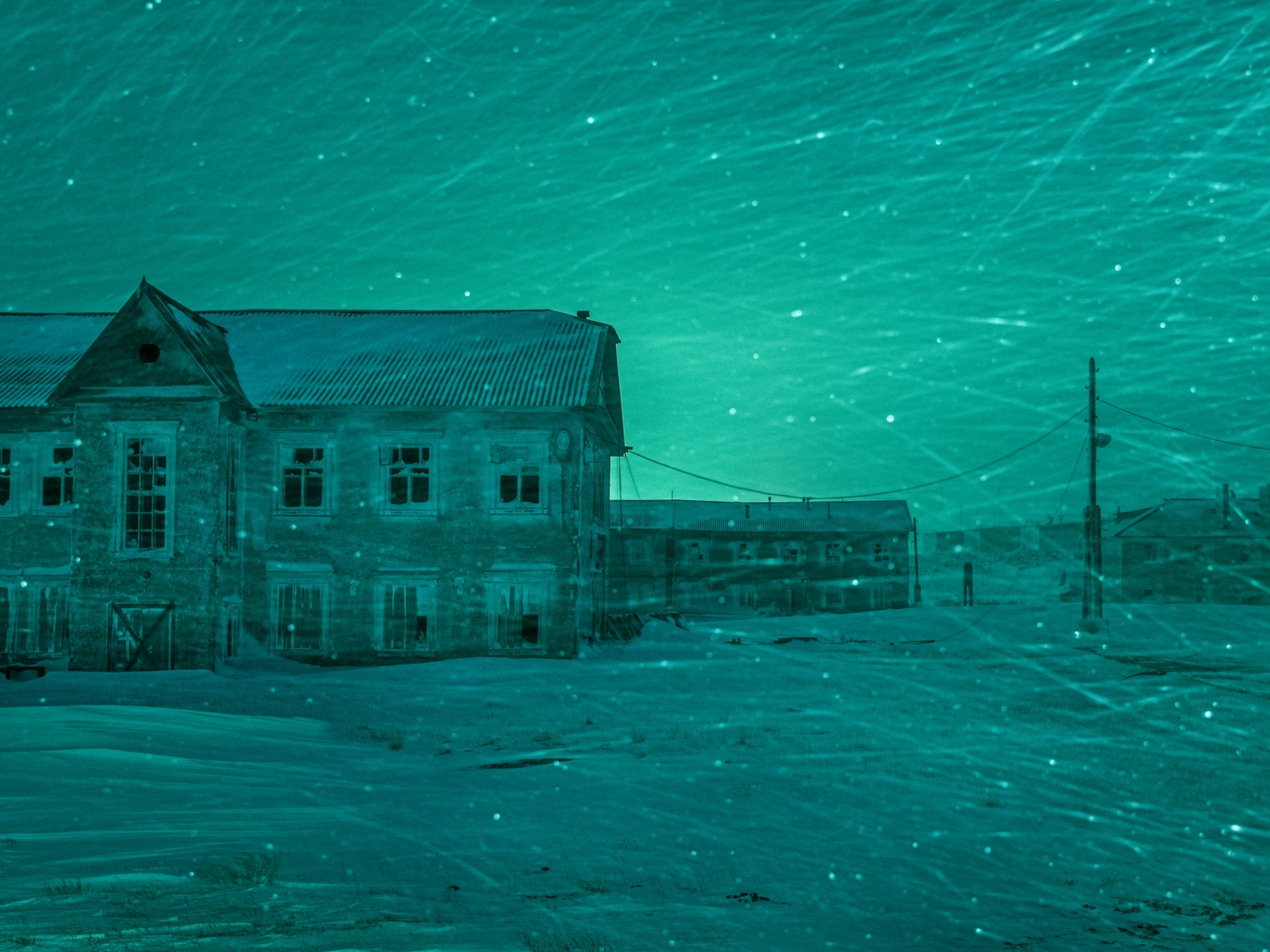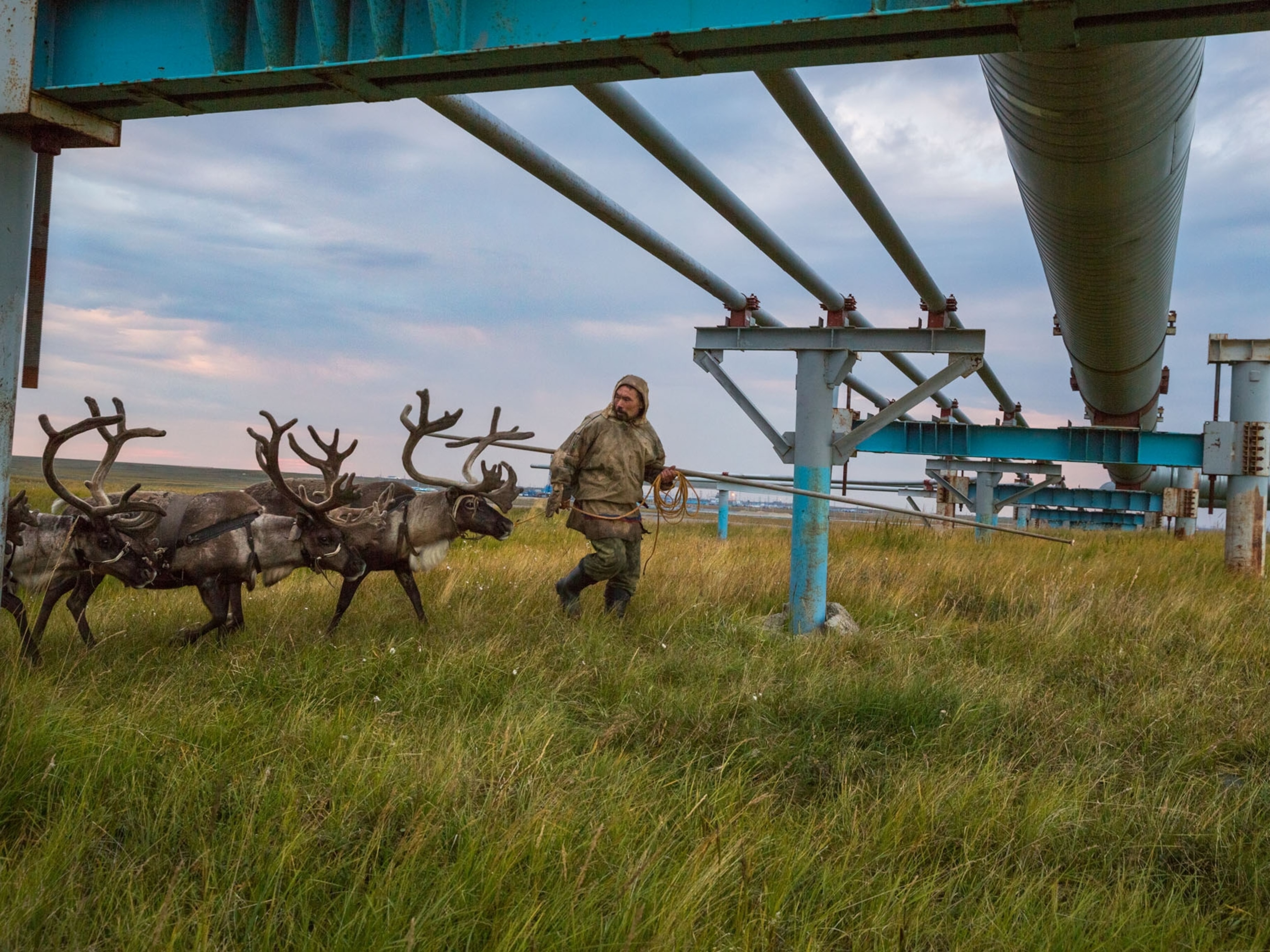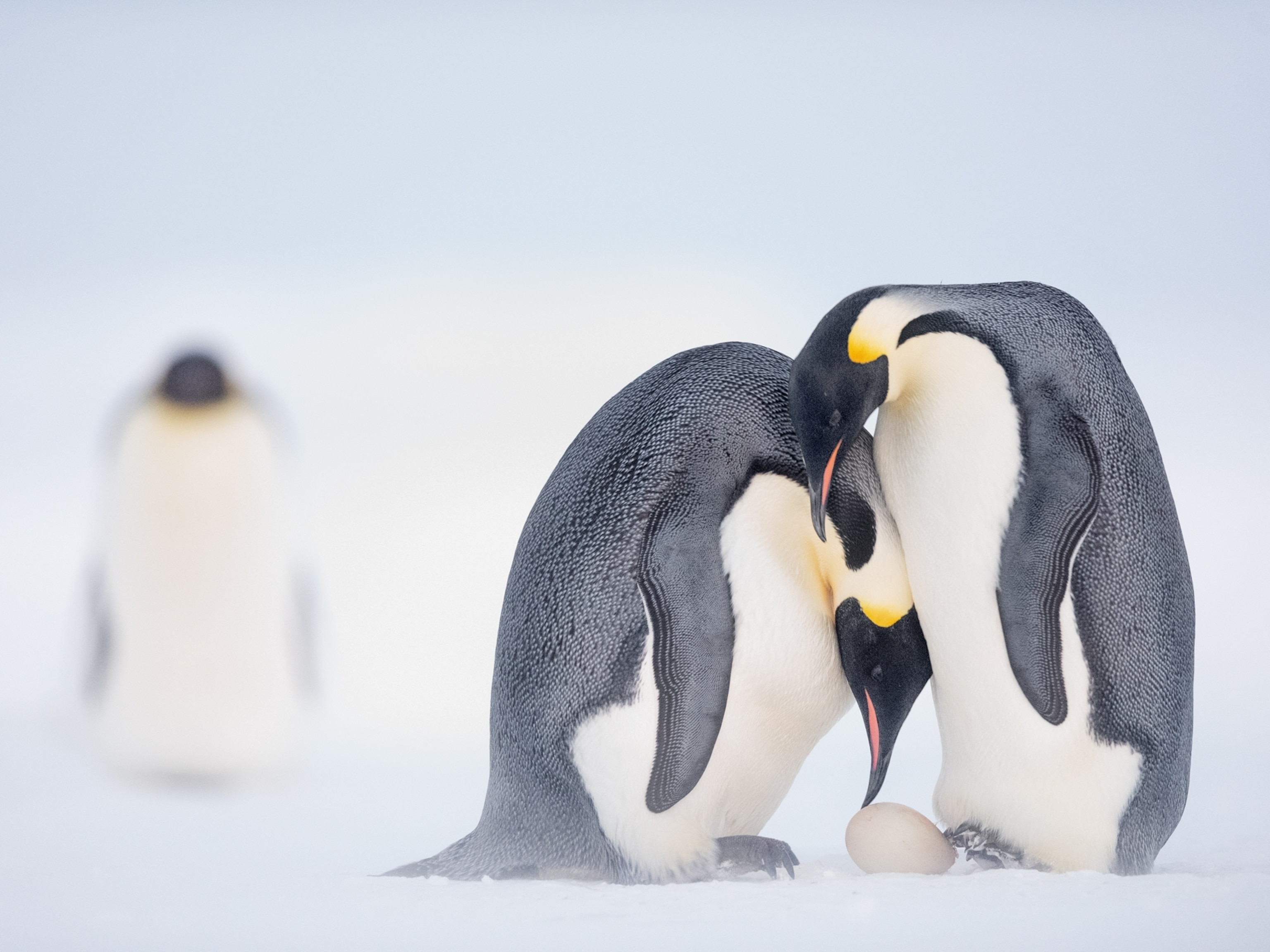
Extreme Research Shows How Arctic Ice Is Dwindling
What happens when the planet loses some of its ability to cool itself?
The sea ice that blankets the Arctic Ocean isn’t the unbroken white mantle depicted in maps. It’s a jigsaw puzzle of restless floes that are constantly colliding, deforming, and fracturing from the force of wind and ocean currents. Last February I stood shivering on the deck of the Lance, an old Norwegian research vessel, as it picked a path through a labyrinth of navigable fractures. A barren white plain of ice and snow extended to the horizon in every direction. The ship’s steel hull shuddered and screeched as it plowed through floating chunks of jagged ice. The Lance was seeking a solid patch of ice to attach to—the last one had shattered—so that it could resume its erratic drift across the frozen sea, charting the fate of Arctic sea ice by going with the floe.
The Norwegians have done this before, more than a century ago, when polar explorer Fridtjof Nansen and the Fram were locked in pack ice for nearly three years during a vain attempt to drift across the North Pole. But the Arctic is a different ocean now. The air above it has warmed on average about 5 degrees Fahrenheit in the past century, more than twice the global average. Much less of the ocean is covered by ice, and much more of that ice is thinner, seasonal ice rather than thick, old floes. A feedback loop with far-reaching consequences has taken effect: As white ice is replaced in summer by dark ocean water, which absorbs more sunlight, the water and air heat further—amplifying the ongoing thaw.
“The Arctic warms first, most, and fastest,” explains Kim Holmén, the long-bearded international director of the Norwegian Polar Institute (NPI), which operates theLance. Climate models predict that by as early as 2040 it will be possible in summer to sail across open water to the North Pole.
Arctic sea ice helps cool the whole planet by reflecting sunlight back into space. So its loss inevitably will affect the climate and weather beyond the Arctic, but precisely how remains unclear. Better forecasts require better data on sea ice and its shifting, uneven distribution. “Most scientific cruises to the Arctic are conducted in summer, and this is where we have the most field data,” says Gunnar Spreen, an NPI sea-ice physicist I met on board the Lance. “The continuous changes that occur from winter into spring are a huge gap in our understanding.”
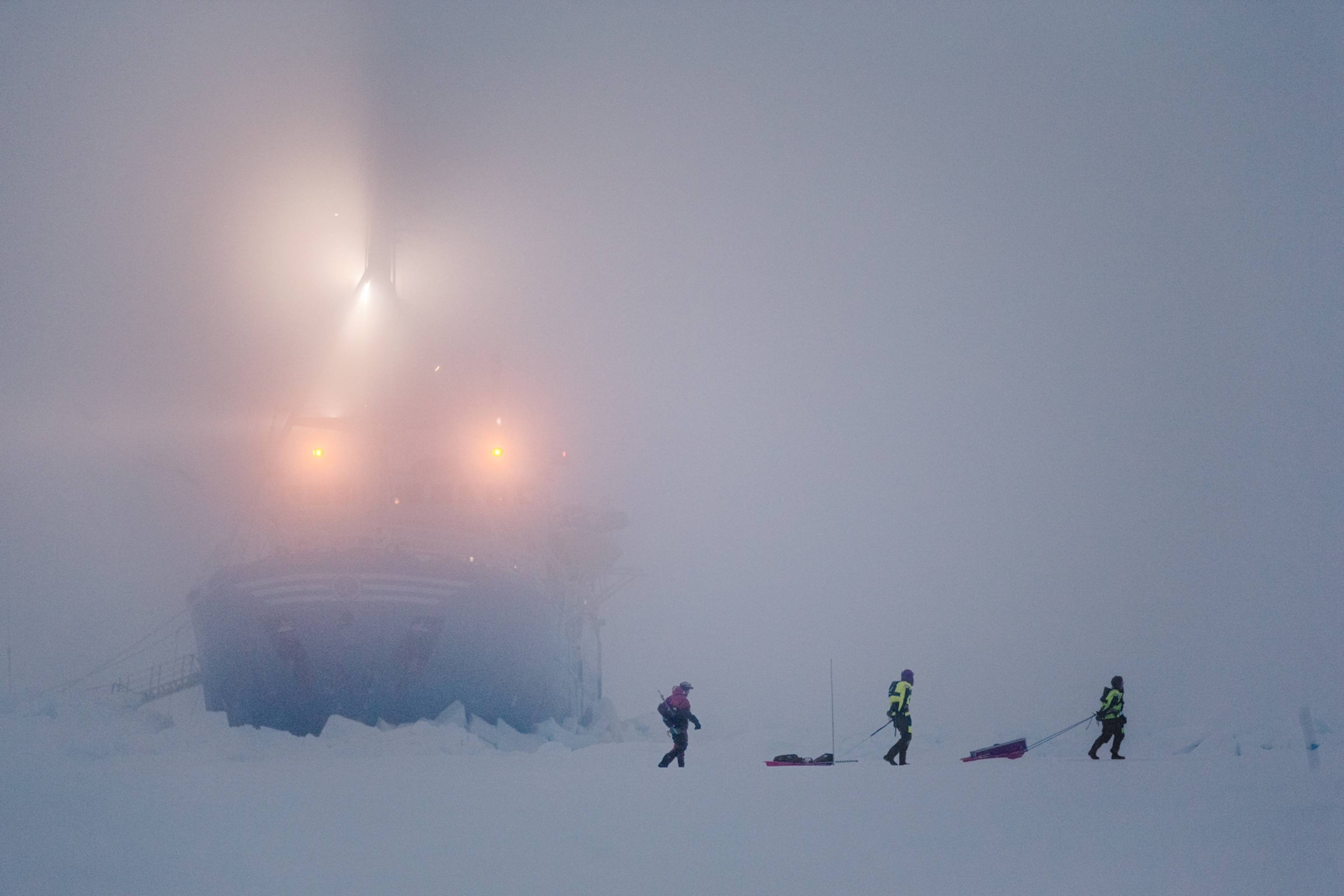
On the Lance’s five-month mission its rotating crew of international scientists would investigate the causes and effects of ice loss by monitoring the ice across its entire seasonal life cycle—from the time when it formed in winter until it melted in summer.
A few days after photographer Nick Cobbing and I joined the ship by icebreaker and helicopter from Longyearbyen, on the island of Spitsbergen in the Svalbard archipelago—the base for NPI’s Arctic operations—the Lance steamed to 83 degrees north, just west of Russian territory. The scientists singled out a half-mile-wide floe of predominantly seasonal ice that they hoped to study. The crew tethered the vessel to the floe with nylon ropes attached to thick metal poles driven into the ice. They shut off the main engine. Isolated and in near darkness, we began our wayward drift and our month-long shift in the ice desert.
Like homesteaders, the scientists established camps on the floe, pitching tents and laying electric cables. Physicists like Spreen mapped the ice topography with lasers and recorded the thickness and temperature of the snow on top. Oceanographers bored a hole through the ice to gather data about the water and the currents. Meteorologists erected masts carrying instruments to collect weather data and measure greenhouse gases. Biologists searched for ice algae, which look like dirt and live on the underside of the ice and in the channels of trapped brine left after newly formed sea ice expels salt. In a few weeks, after the returning sun cast aside the cloak of polar night and began filtering through the melting floe, the scientists would watch the ecosystem awaken.
Temperatures regularly plunged to 30 degrees below zero Fahrenheit. Scientists had to contend with numb fingers, snapped cables, and crippled electronic instruments, along with the danger of roving polar bears. “This is really extreme science,” one researcher said.
The Arctic really is the canary showing that climate change is real.James Overland, Oceanographer
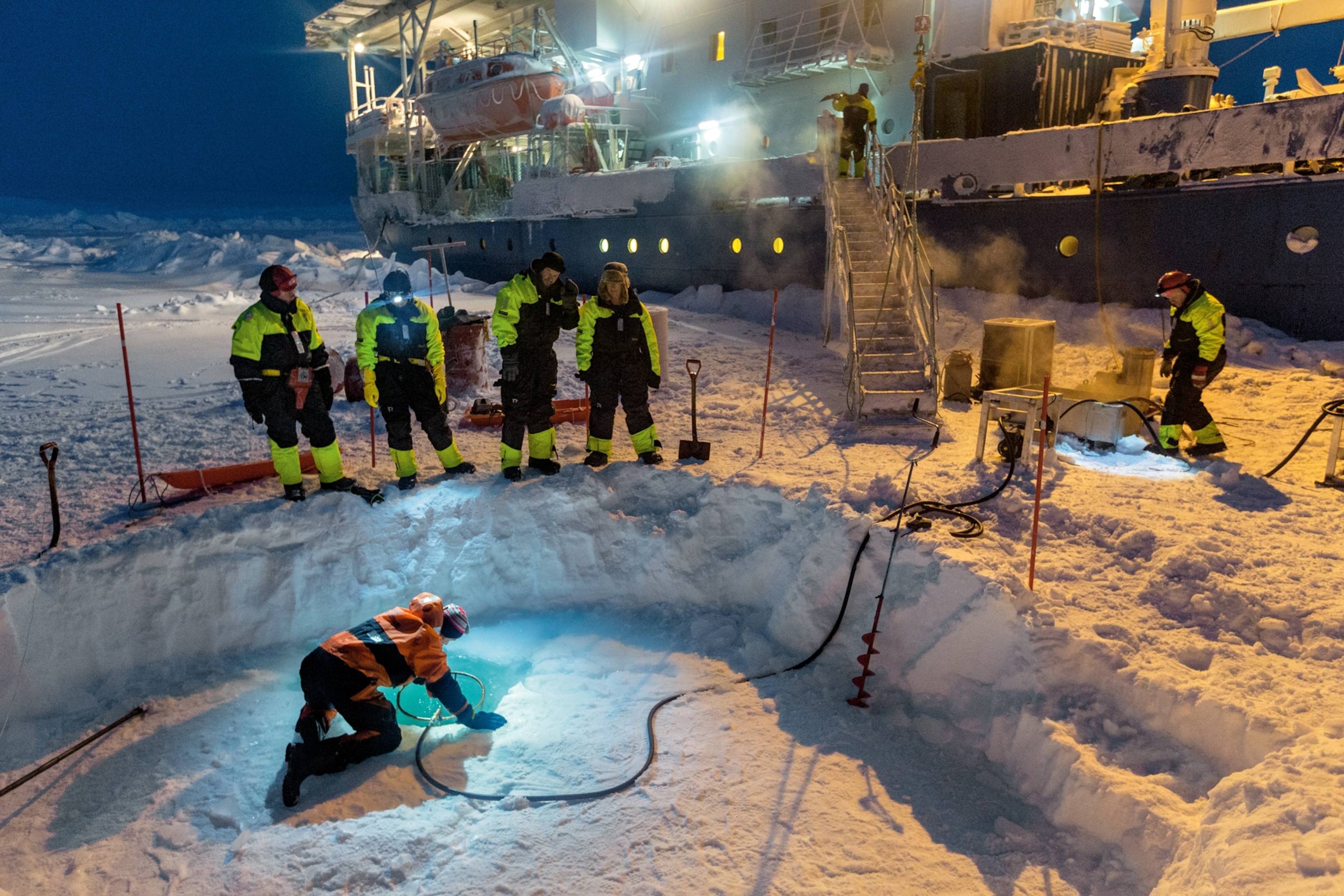
In 2007 the UN Intergovernmental Panel on Climate Change (IPCC) warned that the impacts of climate change in the Arctic over the next century “will exceed the impacts forecast for many other regions and will produce feedbacks that will have globally significant consequences.” Nearly a decade later this grim forecast is already being borne out. Probably no region has been more affected by climate change than the Arctic. Permafrost is thawing, and the land is greening, as tree lines creep north and shrubs and grasses invade the tundra. Certain populations of polar bears, walruses, and caribou have suffered significant declines. National Oceanic and Atmospheric Administration (NOAA) oceanographer James Overland says, “The Arctic really is the canary showing that climate change is real.”
Since 1979, when satellite records began, the Arctic has lost more than half its volume of ice, which has diminished in both overall area and thickness. The frozen area shrinks to its annual minimum in September, at summer’s end. In September 2012 its extent was just half the average during the 1980s and ’90s. The maximum ice extent in winter, usually reached in March, also is declining, though at a slower rate; its average thickness has decreased by half. What was once mostly a layer of 10- to 13-foot-thick ice floes that lingered for years—perennial ice—has given way to large tracts of thinner, less reflective ice that forms and melts during a single year. Sea-ice coverage has always fluctuated naturally, but there’s little doubt among scientists that man-made greenhouse gases are now accelerating its decline. “Old, thick sea ice was a global reservoir for cold, but that is now changing,” Overland says.

An entire ecosystem is melting away. The loss of sea ice may take a toll on some of the photosynthesizing organisms that fuel the marine food chain—single-celled algae that live under the ice and bloom in the spring when the light returns. Changes in the magnitude and timing of these blooms, as winter ice retreats faster and earlier, may throw off the life cycle of tiny, fatty zooplankton called copepods, which eat the algae and are in turn eaten by arctic cod, seabirds, and bowhead whales. For marine mammals such as the polar bear, Pacific walrus, and ringed seal, the loss of hundreds of thousands of square miles of sea ice has already been devastating. “It’s like someone took the floor out from under you,” says Kristin Laidre, a polar scientist at the University of Washington.
The upshot of all this, as ecologist Ian Stirling bluntly puts it: “The Arctic marine ecosystem as we know it now will no longer exist.”
The assumption is that later this century, without a home field, these animals will simply lose all competitive advantage. Killer whales, for example, are likely to replace polar bears as the top marine predators, as bears retreat to the dwindling remnants of summer sea ice. Though polar bears sometimes spend time on land, where lately a few have been hybridizing with grizzlies, Ian Stirling of the University of Alberta, a leading polar bear expert, dismisses any notion that they could survive long-term on land as “wishful thinking.” Ice-free conditions are likely to draw in other competitors—zooplankton (maybe less fatty and nutritious ones), fish, seals—from more temperate waters.
Ice loss is also making the Arctic even more vulnerable to ocean acidification, another effect of rising atmospheric carbon dioxide. Cold water absorbs more CO₂ than warm water does, and more cold water is now open to the air. As the water acidifies, it loses carbonate. Within the next 15 years it may no longer contain enough for animals such as sea snails and Alaska king crabs to construct and maintain their calcium-carbonate shells.
The upshot of all this, as Stirling bluntly puts it: “The Arctic marine ecosystem as we know it now will no longer exist.”
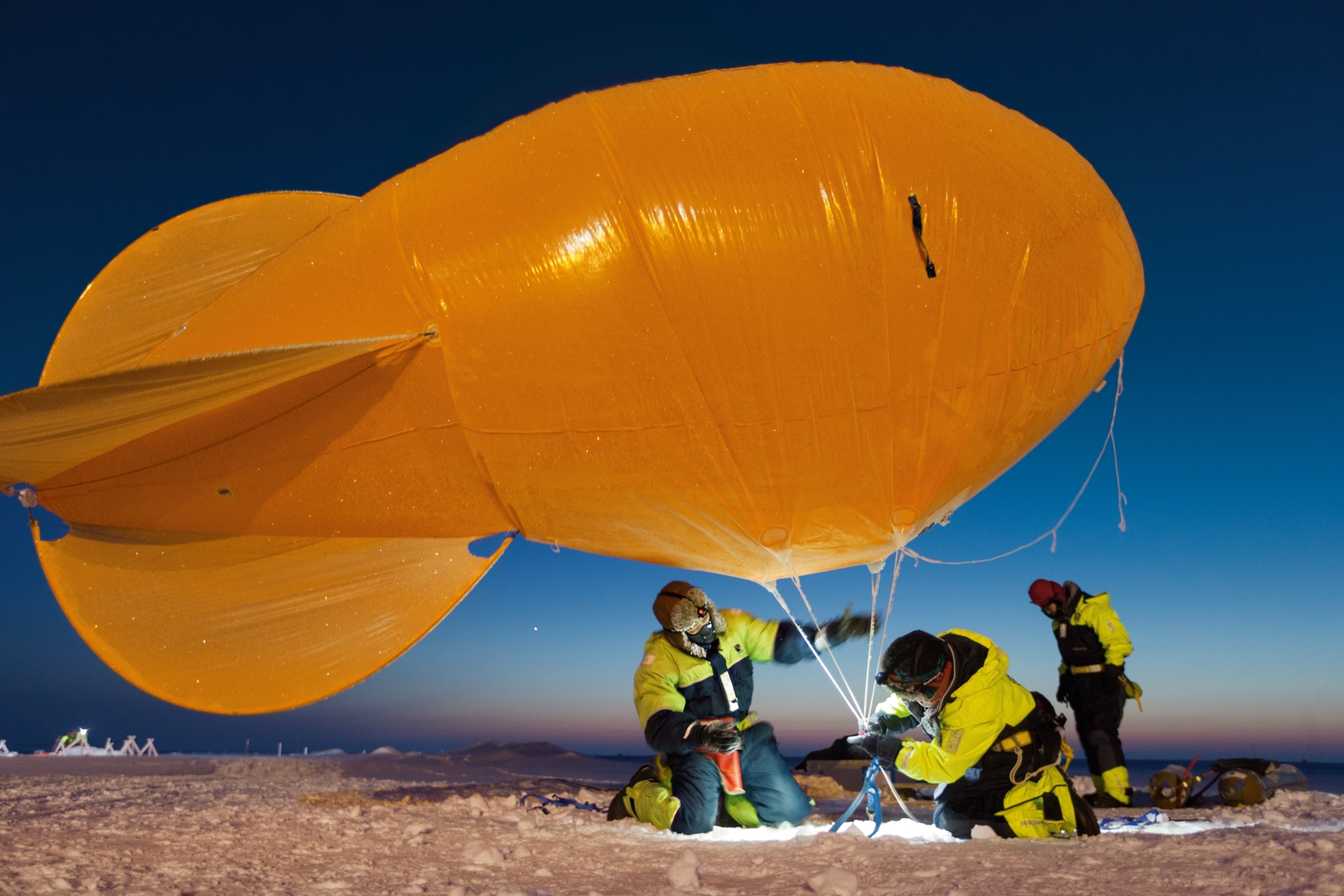
Warmer air above the ocean basin is projected to spill down over the surrounding coasts of Russia, Alaska, and Canada, causing feedback effects as far as 900 miles inland, including accelerated melting of the Greenland ice sheet and large emissions of carbon dioxide and methane from thawing tundra. IPCC models forecast that the total loss of summer sea ice may in itself cause one-third of the warming of the Northern Hemisphere and 14 percent of total global warming by the end of the century.
How a rapidly warming Arctic will influence weather across the hemisphere is a bit hazier. Atmospheric scientists Jennifer Francis at Rutgers University and Steve Vavrus at the University of Wisconsin have suggested that people in the continental United States already may be feeling the effects of melting Arctic sea ice—especially in the past two winters in the east, which made “polar vortex” household words.
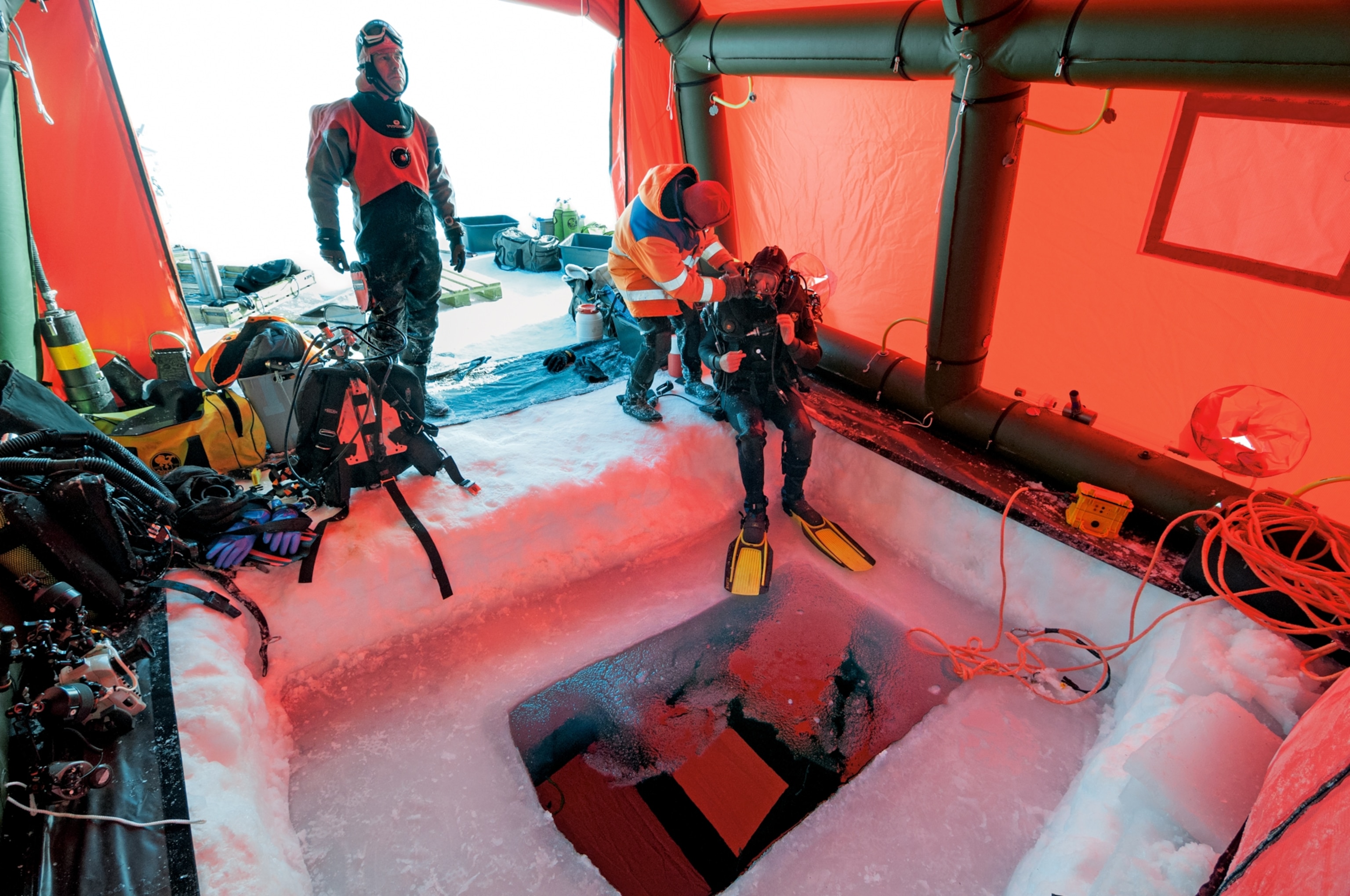

Life Under Arctic Ice
The polar vortex is the mass of cold air that’s normally confined over the Pole by the polar jet stream—the high-altitude, fast-moving torrent of air that snakes around the Pole from west to east. The jet stream draws most of its energy from the contrast in temperature and pressure between the frigid air to its north and the warmer air to the south. As sea-ice loss amplifies the warming in the Arctic, the Francis theory goes, that contrast is reduced, weakening the jet stream’s westerly winds. It becomes a lazier, more sinuous river, with large meanders that extend far to the south and north. Because the meanders advance slowly across the map, whatever weather they enfold persists for a long time. During the past two winters the wavier pattern allowed Arctic air and extreme snow to beset New England and drought to linger over California. The melting Arctic may be affecting weather elsewhere too. Korean researchers have linked extreme winters in East Asia to air-circulation changes caused specifically by ice loss in the Barents-Kara Sea.
It’s a neat theory, but parts of it remain “fuzzy,” Francis admits. Also, many researchers who study atmospheric dynamics aren’t buying it. A more plausible explanation for the wavier jet stream and the southward excursions of the polar vortex, some of them argue, is the influence of the tropical Pacific, which is a far more powerful source of heat than the Arctic. It will take years of data gathering and modeling to settle the debate.

In any case, as the warming of the planet continues, cold spells of any kind will become less common. Even if sharp limits on greenhouse gas emissions are adopted over the next 20 years, the decline of sea ice will continue for decades. “We’re on a one-way trip and not going back,” says Overland. A further rise of 4 degrees Celsius (7.2 degrees Fahrenheit) in the Arctic is all but assured by mid-century, he says, enough to keep the ocean ice free for at least two months of the year, enough to change the seasons there—“enough to affect everything.”
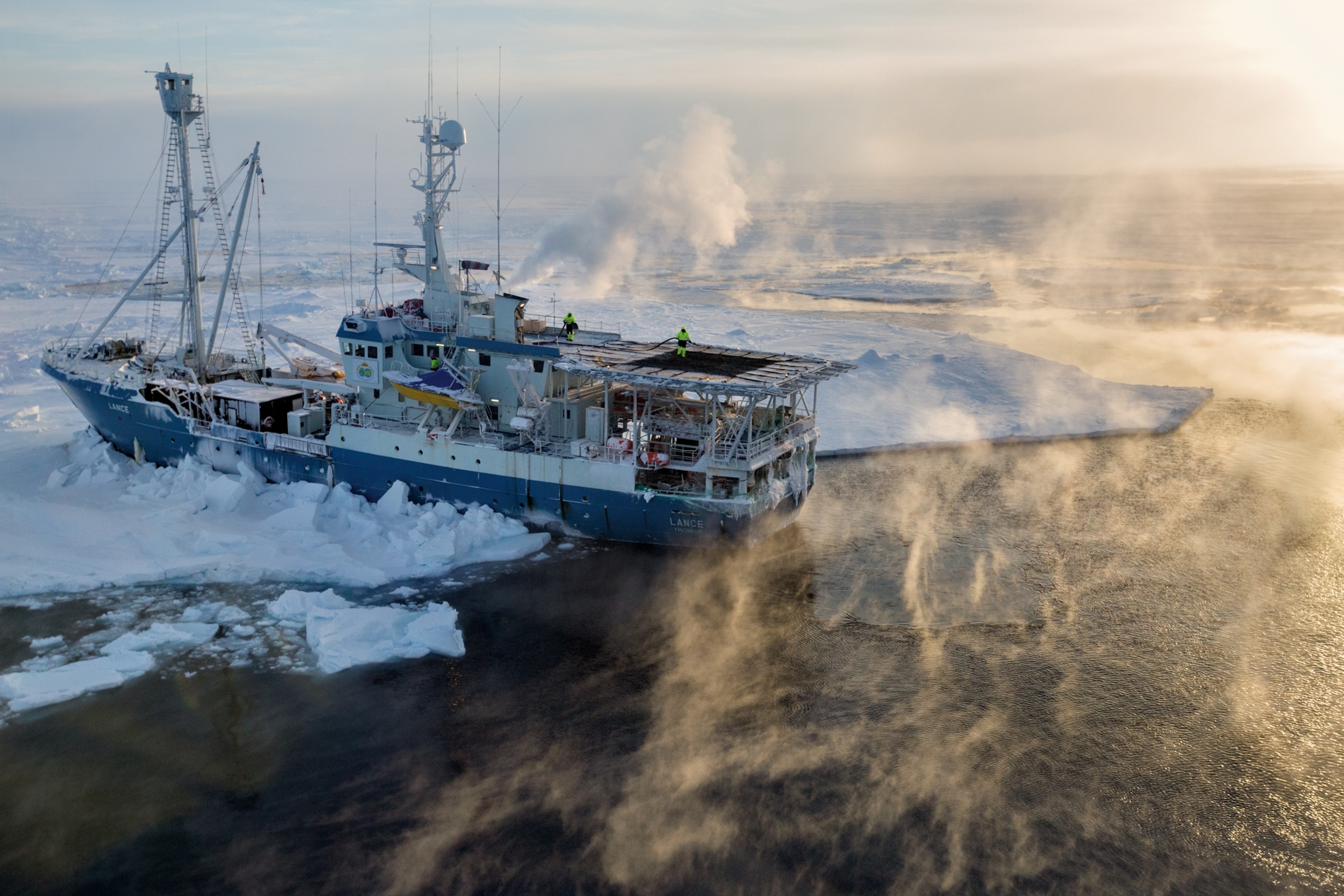
In late June, during the final phase of their expedition, the scientists aboard the Lance awoke to discover that the latest ice floe they’d attached to was disintegrating too. They scrambled to salvage their gear before it became flotsam. It was time to pack up anyway. The vessel by that point had spent 111 days in the ice, tethered to different floes for several weeks at a time—logging altogether some 4,000 nautical miles across the Arctic. Polar bears had crossed its path, sometimes pausing to play with the scientists’ strange-looking electronic instruments. Storms had bulldozed huge blocks of ice high against the ship, elevating it above the surface. The Lance’s crew had bested the researchers in a soccer match on the floe. Over the next couple of years the 68 scientists involved will be hunkered in their warm labs, making sense of all the data they gathered.
One morning in March, under a dusky blue sky, I had joined Gunnar Spreen and another NPI researcher, Anja Rösel, on one of their periodic forays to measure changes in the ice floe’s thickness. We each wore insulated armor—jumpsuit, balaclava, goggles, gloves, mittens over the gloves. The scientists brought along a snow-depth probe, a GPS device, and an orange plastic sled carrying the ice-thickness instrument, which works by inducing an electric current in the seawater below. I carried a flare gun and a .30-06-caliber rifle: bear protection. Following a mile-long path staked by bamboo poles, we trudged over dunelike snowdrifts and pressure ridges—slabs of sea ice pushed up by colliding floes—that looked like crumbling stone walls. Every few feet Spreen stopped and plunged the depth gauge into the snowpack until it beeped to indicate that the measurement was complete.
Arctic warming seemed an abstract concept that day—I couldn’t really feel my toes—but across the icescape, Spreen saw evidence of change. “This is an unusual amount of snow,” he noted. Two feet of it lay beneath our moon boots, twice the amount in a typical year. One data point doesn’t make a trend, but this one was consistent with model forecasts: As sea ice shrinks, the extra heat and water vapor released from the open water into the lower atmosphere should generate more precipitation.
More snow falling on a glacier on land would be a good thing, because that’s how glaciers grow—by accumulating layers of snow so thick that the stuff at the bottom gets compressed into ice. But sea ice forms when cold air freezes seawater, and snow falling on top of it acts as an insulating blanket that slows the growth of the ice. As it happened, two weeks after my walk with Spreen, the National Snow and Ice Data Center in Colorado announced that Arctic sea ice had already reached its maximum extent for the winter in late February—much earlier than usual. It was the lowest maximum the satellites had ever recorded.


